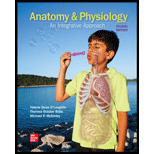
Ashley is a 29-year-old pregnant woman who is in the second trimester of her pregnancy. At her regular OB/GYN checkup, the doctor records the following about Ashley:
Heart rate: 92
Urinalysis: Negative for bacteria and protein in urine
Weight gain since beginning of pregnancy: 15 pounds
Blood pressure: 115/79 mm Hg
Uterine fundus height: At a midpoint between the umbilicus and the xiphoid process of the sternum
Blood glucose level: 95
5. As Ashley cares for her son, she notices some problems in his development. During one of the baby’s checkups. Ashley voices her concerns to the pediatrician. The pediatrician performs a series of assessments on the baby and orders a genetic workup. The genetic test results demonstrate that the baby has Duchenne muscular dystrophy, which is an X-linked recessive trait.
Based on your knowledge of heredity, if the baby boy has Duchenne muscular dystrophy, then what else must be true?
- a. The baby’s father is a carrier of the Duchenne muscular dystrophy allele and passed along this trait to the baby.
- b. Duchenne muscular dystrophy is an autosomal-dominant disorder.
- c. Ashley is a carrier of the Duchenne muscular dystrophy allele but does not display symptoms because she has two X chromosomes, one of which is normal.
- d. If Ashley had a baby girl (instead of a baby boy), the baby girl would be at equal risk for having Duchenne muscular dystrophy.
Want to see the full answer?
Check out a sample textbook solution
Chapter 29 Solutions
ANATOMY+PHYSIOLOGY-CONNECT ACCESS
- What is the result of the acid-fast stain below: Stock Images by Getty Images by Getty Images by Getty Images by Getty Image Getty Images St Soy Getty Images by Getty Images by Getty Images Joy Getty encapsulated O endosporulating negative ○ positivearrow_forwardYou have a stock vial of diligence 75mg in 3ml and need to draw up a dose of 50mg for your patient.how many mls should you draw up to give this dosearrow_forwardYou are recquired to administer 150mg hydrocortisone intravenously,how many mls should you give?(stock =hydrocortisone 100mg in 2mls)arrow_forward
- If someone was working with a 50 MBq F-18 source, what would be the internal and external dose consequences?arrow_forwardWe will be starting a group project next week where you and your group will research and ultimately present on a current research article related to the biology of a pathogen that infects humans. The article could be about the pathogen itself, the disease process related to the pathogen, the immune response to the pathogen, vaccines or treatments that affect the pathogen, or other biology-related study about the pathogen. I recommend that you choose a pathogen that is currently interesting to researchers, so that you will be able to find plenty of articles about it. Avoid choosing a historical disease that no longer circulates. List 3 possible pathogens or diseases that you might want to do for your group project.arrow_forwardnot use ai pleasearrow_forward
- DNK dagi nukleotidlar va undan sintezlangan oqsildagi peptid boglar farqi 901 taga teng bo'lib undagi A jami H boglardan 6,5 marta kam bo'lsa DNK dagi jami H bog‘lar sonini topingarrow_forwardOne of the ways for a cell to generate ATP is through the oxidative phosphorylation. In oxidative phosphorylation 3 ATP are produced from every one NADH molecule. In respiration, every glucose molecule produces 10 NADH molecules. If a cell is growing on 5 glucose molecules, how much ATP can be produced using oxidative phosphorylation/aerobic respiration?arrow_forwardIf a cell is growing on 5 glucose molecules, how much ATP can be produced using oxidative phosphorylation/aerobic respiration?arrow_forward
 Nutrition Through The Life CycleHealth & NutritionISBN:9781337919333Author:Brown, Judith E.Publisher:Cengage Learning,
Nutrition Through The Life CycleHealth & NutritionISBN:9781337919333Author:Brown, Judith E.Publisher:Cengage Learning,





